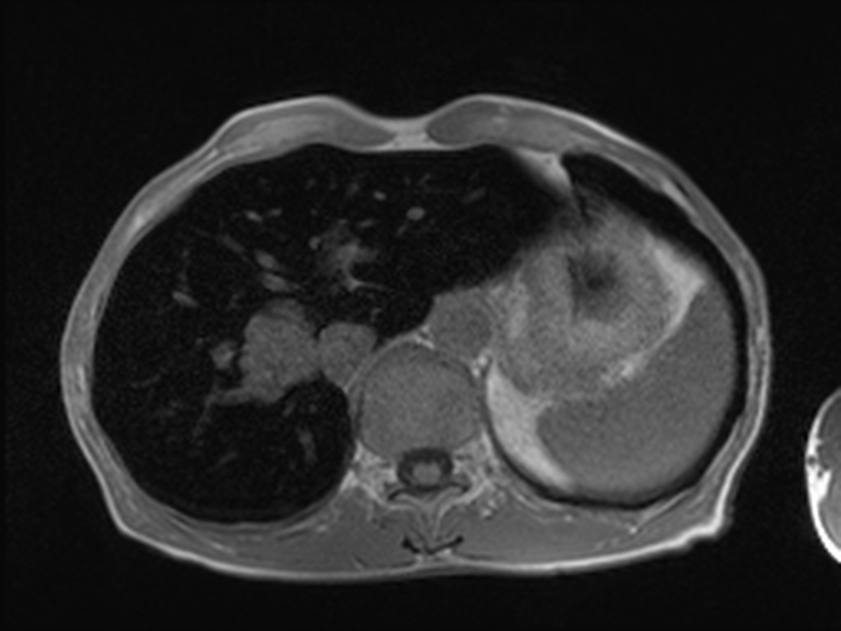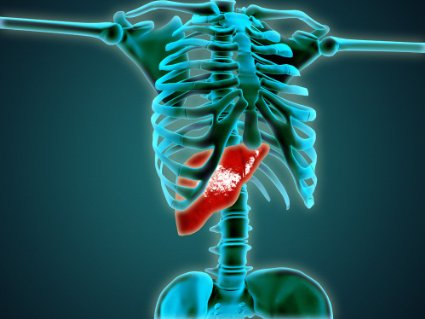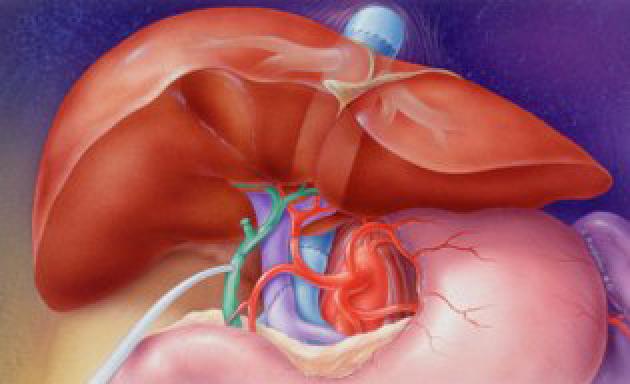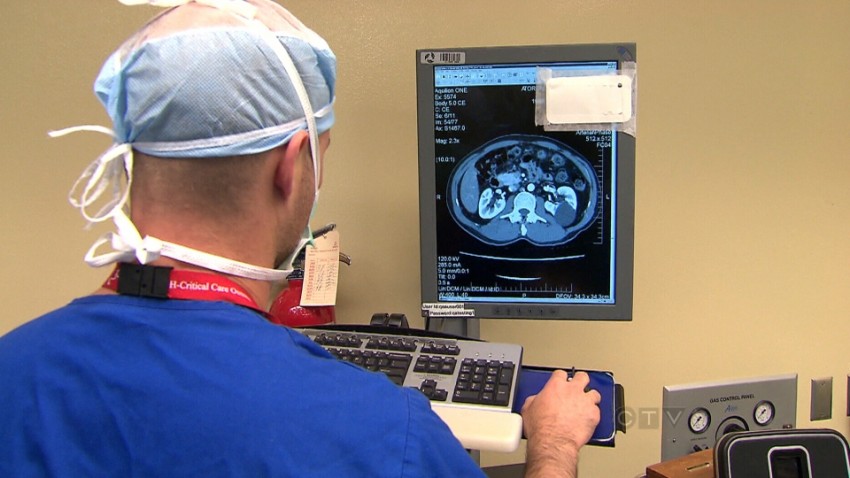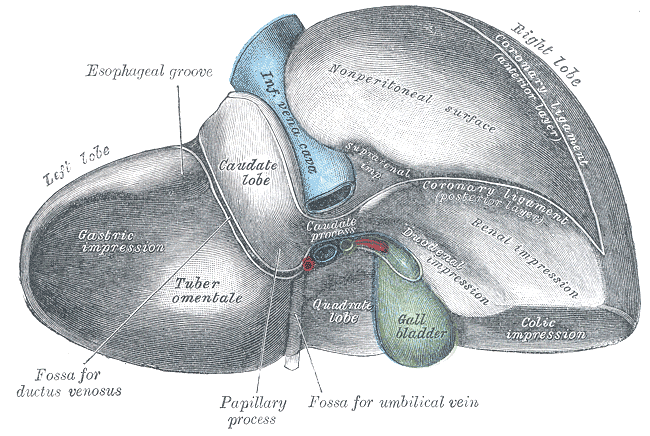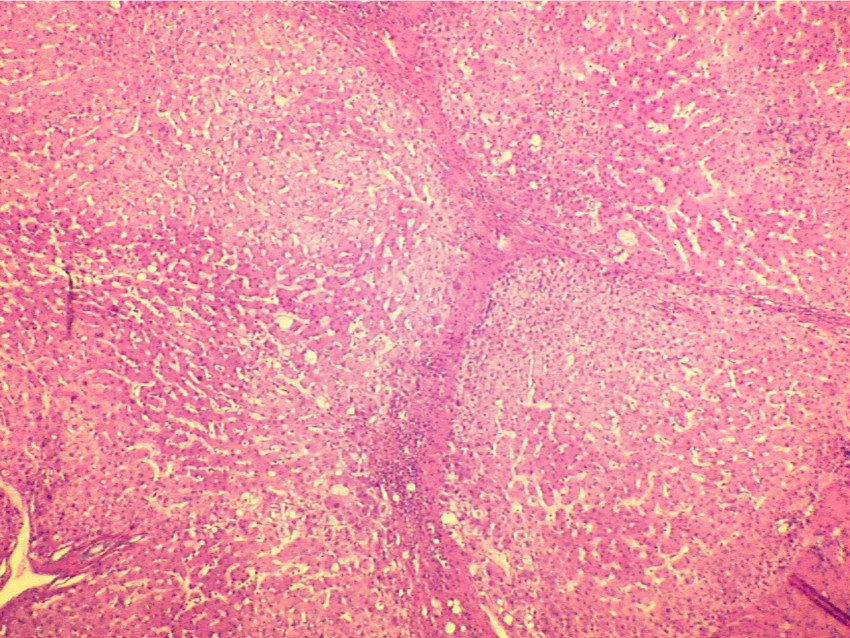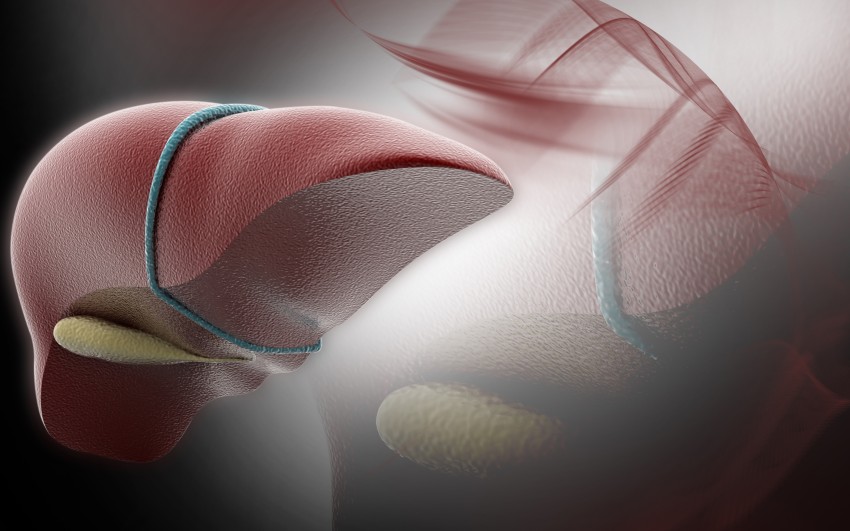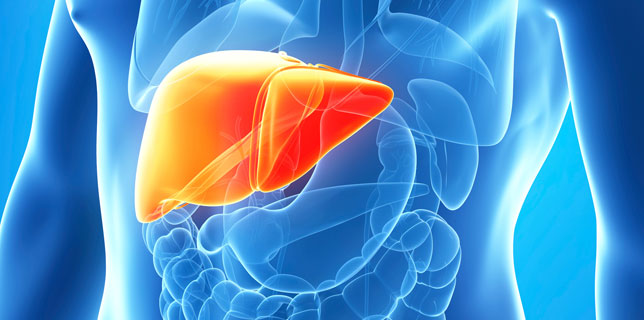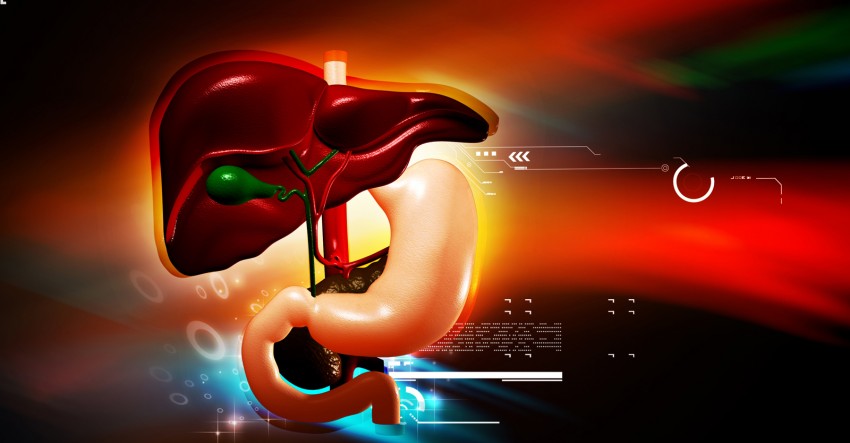Alcohol Liver Damage 14
HEMOCHROMATOSIS OF THE LIVER

Hemochromatosis is a genetic disorder where the body absorbs and stores too much of iron. This extra iron gets stored in all parts of the body especially the liver and leads to serious complications. The body absorbs about 10 percent of iron (about 1 – 2 grams per day) from food we take and is sufficient for the body. People with Hemochromatosis absorb more (4 – 5 grams leading to 15 – 40 grams per day) than the body needs leading over build up of iron and causing organ failures.
Symptoms for Hemochromatosis
There are no specific symptoms for this condition. Common symptoms of hemochroatosis are fatigue, pain in the abdomen and heart problems. These signs are noted in men between the age of 30 and 40 and above age 50 for women.
When the disease is not detected early, iron build up in the tissues cause serious complications such as
- Liver problems like cirrhosis, liver cancer, enlarged liver and liver failure
- Arthritis
- Diabetes
- Heart problems and heart failure
- Pigmentation and discolouration of skin
- Early onset of menopause
- Damage to pituitary and adrenal glands
- Impotence
- Gall bladder disease
- Depression
- Joint pains
- Loss of body hair (except scalp)
Genetic Cause for Hemochromatosis
Hemochromatosis is the result of a defect in the gene called HFE. HFE functions in regulating the iron absorption from food. The gene is present at birth but hemochromatosis develops only when both the parents have the defective gene. If it is from one parent, then the person is a carrier of the defective gene and does not develop hemochromatosis.
Adolescent and Neonatal Cause for Hemochromatosis
The cause for the adolescent and neonatal hemochromatosis is not known although it is not due to the HFE gene defect. The condition forms a fatal overload of iron and causes liver and heart diseases in both the cases.
Diagnosis for Hemochromatosis
If the levels are high in the following blood tests, test for confirming the presence of the HFE gene is done.
- Serum iron test – measures the level of iron concentration in blood
- Total iron binding capacity – measures the quantity of iron that the blood can carry
- Serum ferritin level – measures the level of ferritin protein containing iron
A liver biopsy confirms the presence of this disease. Excessive iron storage is found in liver damaged patients due to alcohol and hepatitis infection.
Treatment for Hemochromatosis
Treatment for hemochromatosis is safe and inexpensive. The best and effective treatment for hemochromatosis is Phlebotomy. It is a process where certain amount of blood is taken out from the body once or twice a week depending on the severity of iron over load. The treatment is followed for few months to a year. It helps reduce the iron level in the blood to normal and maintain the same. After this, maintenance treatment is given where a certain amount of blood is given every 2 to 4 months for life. The frequency of blood transfusion is based on the blood results every year.
Liked this article on Hemochromatosis Of The Liver and have something to say? Comment below and don’t forget to SHARE THIS ARTICLE!
SYMPTOMS OF LIVER DISEASE
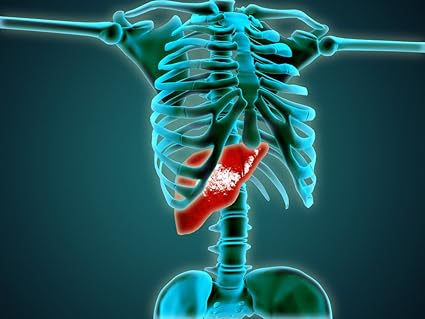
The liver is located in the upper right side of the abdomen below the ribs. It has many essential body functions such as:
- Producing bile, which helps your body absorb dietary fats, cholesterol, and vitamins A, D, E, and K
- Storing sugar and vitamins for later use by the body
- Purifying blood by removing toxins such as alcohol and bacteria from your system
- Creating blood clotting proteins
If there is any complication in those above mentioned functions, People will undergo the following symptoms.
Causes Pain in Abdomen and Swelling (Ascites)
A swollen abdomen occurs when your stomach area is larger than normal. This is sometimes called a distended abdomen or swollen belly. Sometimes it may occur if there is indigestion, food poison and so on; however people need to be aware if there is severe pain particularly in upper abdomen. There may also be
- A feeling of fullness
- Discomfort in your belly

Nausea and Blood in Your Vomit or Stool
Blood in vomit or stool is usually caused by bleeding from veins in the stomach. Vomiting blood, bloody vomit, hematemesis or haematemesis is a symptom that gives direct relation to disease in liver.
Loss of appetite
As the liver fails, complications may develop. In some people, complications may be the first signs of the disease. Many people with cirrhosis have no symptoms in the early stages of the disease. However, as the disease progresses, a person may experiences loss of appetite as a first symptom.
Indigestion and Burning Sensation in Stomach
Indigestion, also known as “dyspepsia”, is a term used to describe one or more symptoms including a feeling of fullness during a meal, uncomfortable fullness after a meal, and burning or pain in the upper abdomen.
Swelling in legs and ankles (edema)
‘Edema’ occurs when tiny blood vessels in your body (capillaries) leak fluid. This leakage can result from damage to or increased pressure in the capillaries, or from lowered levels of serum albumin, a protein in your blood.
When your body senses the capillaries are leaking, your kidneys begin to retain more sodium and water than normal to compensate for the lost fluid from your blood vessels. This increases the amount of fluid circulating through your body, which causes the capillaries to leak more. The fluid from the capillaries leaks into the surrounding tissue, causing the tissue to swell.

Chronic fatigue
Chronic Fatigue Syndrome (CFS) is also known as Myalgic Encephalomyelitis (ME) and it primarily affects young adults and resembles a prolonged flu-like illness.
The symptoms must be present for at least six months before it can be labelled as chronic fatigue syndrome. It seems that about 2 to 4 in a thousand people may have CFS and approximately two thirds of people who get it, are women.
Jaundice
Patients who have jaundice usually have both yellow-colored skin and eyes. Red blood cells travel to your liver, where they are broken down. “Bilirubin” is the yellow pigment formed by the breakdown of these old cells. Jaundice occurs when your liver doesn’t metabolize bilirubin the way it is supposed to.

Itching Skin
Pruritus simply means itching. Prolonged itching of the skin is a major sign of liver disease. When the liver is unable to properly neutralize chemicals, toxins and parasites in the body, a backup method of elimination is that the body may then try to get rid of these undesirable substances through the skin. This can result in itchy rashes and brown spots on the outside of the skin as the foreign substances are pushed out through the outer skin layers.
Changes in Urine Color
Observing the color of your urine is a reasonable way to be alerted that your liver might be abnormal. In general, dark urine could be a signal that the liver is struggling to function properly. When referring dark-colored urine, the following colors are implied:
- Orange
- Amber
- Brown
- Root beer or cola-colored
Many symptoms might be observed even during the normal functioning of your liver, hence always get the advice from a physician before coming to a conclusion.
Liked this article on Symptoms Of Liver Disease and have something to say? Comment below and don’t forget to SHARE THIS ARTICLE!
LIVER FAILURE

The Liver is the only organ that has the natural regenerative capacity. Liver Failure is the irreversible damage to the normal liver tissue where there is scarring of the liver tissue and is beyond the liver’s regenerative capacity. Liver Failure is also called end-stage disease. The main causes for this condition are excess alcohol consumption, viral infection and fatty liver disease.
Causes
The liver produces substances to fight infections in our body. It also helps in getting rid of toxins from our body. It also helps in clotting of the blood, in the nutrient absorption process and also stores energy for our body for later use.
The liver damage may be acute due to following reasons.
- Overconsumption of alcohol
- Viral Infections (Hepatitis B, C and D)
- When the biliary ducts are blocked and bile backs up, it damages the liver
- Autoimmune disorder, where the healthy liver tissue is attacked by the body’s immune system leading to liver failure
- Non-Alcoholic fatty liver disease, where fat builds up in the liver, gradually causing liver damage
- Genetically inherited factors
- Over dosage of drugs/toxins
- When the heart doesn’t pump adequately, blood backs into the liver causing liver failure.
How does the damage happen?
When there is cell damage due to any of the above reasons, the liver produces scar tissues as a result of cell damage and becomes bulged
Initially, though the liver is bulged, as the disease progresses, it begins to shrink in size.
As the scar tissues are hard, they press the blood vessels in the liver and causes interruption to the blood circulation in the liver
The liver gradually dies.
Symptoms of Liver Failure
The following symptoms are seen in Liver Failure
- Tiredness
- Nausea
- Weight loss due to lack of appetite
- Lack of sex drive
- Other symptoms are felt only when the disease has progressed:
- Fluid retention in abdomen
- Accelerated heartbeat
- Confusion
- Dizziness
- Hair loss
- Edema
- Fever
- Muscle cramp
- Blood vomit
- Darker urine
- Staggering
- Nose bleed
- Breathlessness
Complications Due To Liver Failure
Because of scar tissue formation, the blood vessels in the liver get compressed causing high blood pressure in the liver. This is called portal hypertension and can cause bleeding in intestines and fluid accumulation in the body
As the liver loses its ability to filter toxins from the blood, the toxins are left to build up in the blood stream. Due to this, there is a confused behavior in the individual and he/she always feels sleepy.
Due to portal hypertension, the fluids in the body get accumulated in the abdomen. The kidney gets a wrong signal that there is dehydration and tries to hold the fluid. The fluid gets collected in lungs, legs and abdomen.
Liver failure also gradually causes kidney failure
Although liver failure on the outlook looks like a disease that might affect those who consume too much alcohol, it is not actually so. Lifestyle habits, Diet, Genes and Virus too play an important role in liver problems.
Liked this article on Liver Failure and have something to say? Comment below and don’t forget to SHARE THIS ARTICLE!
TESTS AND DIAGNOSIS FOR LIVER PROBLEM

There can be a number of causes for the liver problem like genetic, infections, alcohol abuse and medicine overdose. Therefore a number of tests are required to find the cause for the disease. Before ordering for tests, the history of the patient, if he is using alcohol and the family history of liver problem are known along with this a physical examination is also done. Physical examination of the abdomen, skin, brain, heart and lungs may show indications for liver problem.
Tests for liver disease diagnosis are of three types: Laboratory, radiological and biopsies.
Laboratory Tests
Extensive blood work is done where the following blood parameters are examined.
- Aspartate Amionotransferase (AST) and Alanine Aminotransferase (ALT) liver enzymes are found in raised levels in case of liver inflammation or injured liver. These are also raised in cases of alcohol induced liver disease and in fatty liver diseases.
- Bilirubin level in blood is examined. High levels of conjugated and unconjugated bile indicates liver problem.
- Protein and albumin levels in the blood are checked to see if they are in the appropriate range.
- Gamma Glutamyl Transferase (GGT) and Alkaline Phophatase enzyme levels are raised in case of liver disease.
- Low levels of Total blood count of the white blood cells, red blood cells and the platelets is an indication of the liver disease in its advanced stage.
- Rate at which the blood clots is monitored. Protein formation is hindered by the damaged liver tissues leading to the fail of clotting mechanism thus forming the risk of easy bleeding and bruising.
- Pancreatic lipase test is done as the inflammation in the pancreas is an indication of liver disease.
- Liver problem is associated with kidney dysfunction. Blood urea, creatinine, and electrolytes are checked.
- Blood test to detect Hepatitis viruses is performed.
- Ascitis is the collection of fluid in the abdomen. Ascitic fluid test may reveal cancer cells in patients with liver cancer.
Radiological Tests
These tests help in detecting the liver diseases.
- Computed Tomography (CT) Scan help in looking at the liver tissues in detail specifically without exposing other areas. Any abnormalities are shown in the CT.
- Endoscopic Retrograde Cholangiopancreatography (ERCP) is a procedure where a tube fitted with a camera is directed into the gastrointestinal tract to look for any pathology in the bile and pancreatic ducts.
- Magnetic Resonance Imaging (MRI) produces most advanced images and helps in detecting liver problems and other abnormalities like tumours and blockages. It is used when the CT is not very clear.
- Ultrasonogram (USG) produces sound waves which help detect any pathology in the liver. Any abnormalities like blocked ducts, tumours are also detected.
Liver Biopsy
With the help of local anaesthetic agent, pieces of liver tissues are extracted with the help of a needle. An USG or a CT scan is used to guide the needle into the liver. The microscopically examined tissue sent to the laboratory confirms the presence of liver disease. Liver biopsy can also be done using the laparoscopic surgery method.
Liked this article on Tests And Diagnosis For Liver Problem and have something to say? Comment below and don’t forget to SHARE THIS ARTICLE!
ROLE OF GENES IN LIVER DISEASE
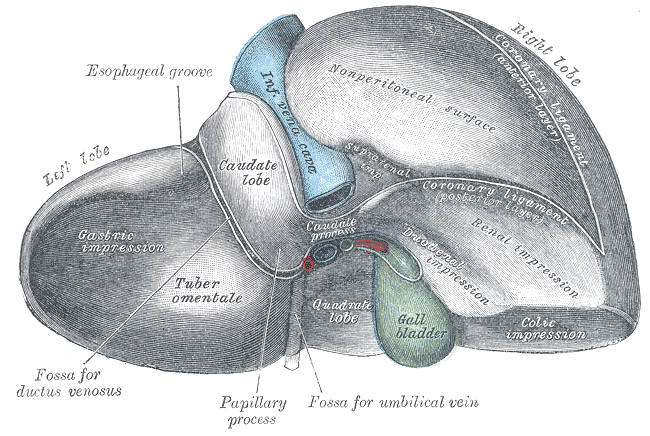
A liver disease may be caused either due to genetic or metabolic defects. The defects may arise due to an enzyme or transport protein that alters the system and causes problems to the liver. This article is going to discuss some of the genetic diseases of the liver and the role of genes in causing early liver diseases.
Genetic Haemochromatosis
Haemochromatosis is a recessive disease where excess iron is absorbed in the body and the deposits are collected in organs. This disease is seen in people having iron overload disorders. Analysis of Human haemochromatosis protein (HFE) would confirm Haemochromatosis.
Alpha-1 Antitrypsin Deficiency
An important liver protein called alpha-1 antitrypsin does not get produced or gets produced in very lower levels in the blood. Though people with this disease have this protein, it gets accumulated in the liver instead of going into the bloodstream. It has been found that this disease is due to the mutations in the SERPINA1 gene.
Cystic Fibrosis Liver Disease (CFLD)
Cystic fibrosis is caused due to the failure in secretion by the biliary epithelium thereby causing an absent or dysfunctional CFTR protein. CFTR protein’s main role is to participate in the first stage of ductal secretion. Its absence initiates progressive periportal fibrosis. There is also a theory that existence of modifier genes and three more genes, alpha-1-antitrypsin, transforming growth factor, and mannose binding lectins are also involved in CFLD.
Wilson Disease
Wilson disease is also an inherited genetic disorder where copper gets accumulated in the lungs and other vital organs. Copper is required for the nerves, bones and skin melanin. It is absorbed from the food and excess copper is excreted through bile (secreted by liver). In case of Wilson’s disease, copper is not excreted properly. So it gets accumulated in liver and other vital organs. When diagnosed in early stage, this disease can be treated. This disease is caused by the genetic mutation of ATP7B gene. When the activity of this gene is reduced, it leads to copper accumulation.
Type 1 Tyrosenmia
Tyrosenemia is a genetically inborn disorder where there is an error in the metabolism, where the body is incapable of breaking down the amino acid called tyrosine. It leads to sever liver disease in childhood. This disease is due to the altered activity of fumarylacetoacetate hydrolase.
Glycogen Storage Disease
This is a genetic disease. It can also be an acquired disease. Glucose is the large energy source of the body. Glucose is stored as glycogen in the liver. It is released into the body with the help of enzymes. In case of genetic disorder, there is a defect in the processing of glycogen synthesis or breakdown within muscles, liver and other cell types. Thus, glycogen gets accumulated in the liver causing failure of liver.
Argininosuccinate Lyase Deficiency and Citrin Deficiency
Urea cycle is one in which a series of reactions inside the body converts nitrogen into ammonia and aspartate into urea. These 2 diseases are caused because of errors in the Urea cycle.
There are several other diseases like Alstrom syndrome (rare disorder that affects many organs of the body. This is caused due to the defects in the function or structure of a hair like structure called cilia that is found in all types of cells in the body), Cholesteryl Ester storage disease, Hereditary Fructose intolerance.
The genetic liver diseases are found in a number of cases with different outcome, penetrance and age group. The role of genes in such cases has to be studied further with the help and collaboration of clinical symptoms and laboratory analysis.
Liked this article on Role Of Genes In Liver Disease and have something to say? Comment below and don’t forget to SHARE THIS ARTICLE!
DRUG INDUCED LIVER INJURY

Have you ever taken a closer look at the pain killers or the drugs that have been prescribed to you by your doctor, to either cure some illness or to relieve you of your pain or to keep some abnormalities under control?
Although not all of these drugs come with a warning sign, some of them do display a message on the bottle, especially in pediatric medicines, that over dosage or too much usage may damage kidneys or liver. I bet you would have heard some doctors say that forgetfulness or excessive urination or something unique accompanies the daily recommended dosage of drugs that help you keep diabetes under control. Every drug you take has some side effects. Let us read a few important concepts regarding liver injury through prescribed drugs.
How does this happen?
Liver injury due to drugs can be classified under three categories based on dosage (idiosyncratic toxicity), inherited genes and allergic reactions. If a person continues to take a drug beyond recommended levels, for example too much paracetamol, if a person has inherited certain genes which makes their body intolerant to specific drugs such as penicillin or if a person gets allergic to some prescribed drug due to the movement in the immune system induced by the same, then liver injury falls under those respective categories mentioned above.
Some well known drugs known to cause liver injury
Paracetamols And Pain Killers – Most paracetamols and some pain killers can cause damage to liver and kidneys when taken over a long period of time. Widely known examples are brufen, crocin, nimulid/nimuslide and so on. These can be taken in moderation and only during a pressing need. In other words if you take them every time you suspect a fever or headache then possibility of liver damage could be high.
Statins – Are you suffering from high cholesterol and tri-glycerides? In that case your doctor must have prescribed statin to keep your cholesterol levels low. Most doctors believe statin to be quite safe to the liver. However, studies have proved that prolonged usage of statin may lead to liver damage.
The good news however is once you stop taking statin there is a high chance that liver damages can be reversed. Hence it is better to take statin for such time that you bring cholesterol under control which includes changes in your diet and then discuss with your doctor and refrain from taking it.
Antibiotics – Certain antibiotics taken to help in minimizing some illnesses such as Nitrofurantoin which is used to treat urinary tract infections, Augmentin for treatment of influenza or other viral fever are known to cause hepatitis in some cases over prolonged usage. Hence it is better to ensure that these drugs are taken only under the guidance of a doctor and completion of the drug course is mandatory.
Vitamins – In rare cases doctor may prescribe synthetically created vitamins for betterment of the body. When these vitamins are taken for longer periods of time, they may lead to toxicity. The blood may be filled with these artificially created vitamins and the liver enzymes may be polluted and in turn injure the liver. Well known examples are Vitamin A and D tablets produced artificially.
Liked this article on Drug Induced Liver Injury and have something to say? Comment below and don’t forget to SHARE THIS ARTICLE!
STAGES OF LIVER DAMAGE
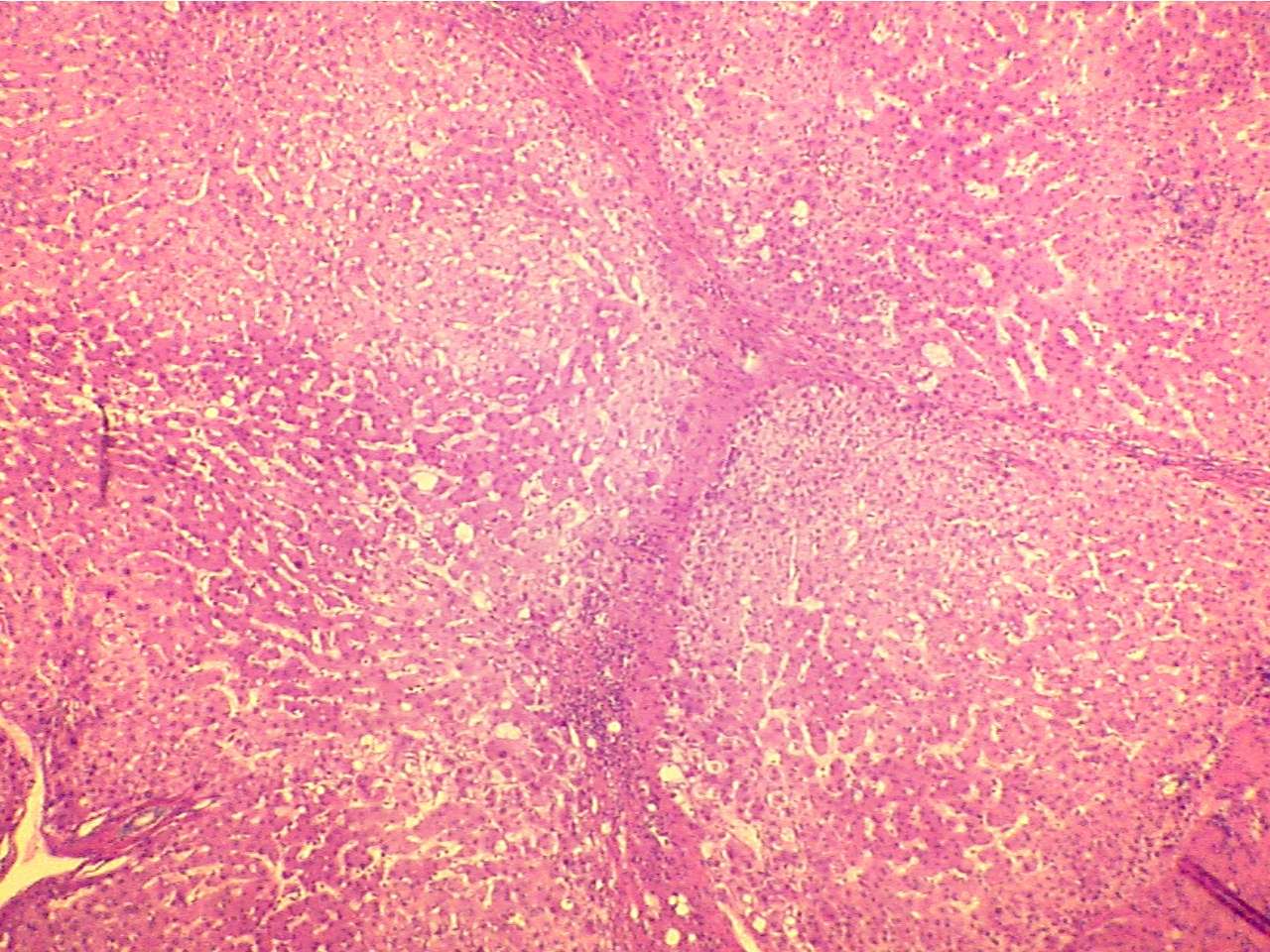
Damage to the liver is progressive in nature and simply does not happen overnight. While there is wide range of causes of liver failure and is diagnosed at different stages, the damage progresses in four stages. Liver damage is the result of alcohol abuse, fatty liver, Hepatitis virus or certain drugs. A healthy liver helps in purifying blood, fights infection; helps digest food and stores proteins and energy. The liver has the ability to regenerate itself by repairing the damaged tissues.
Stage 1: Initial Stage
Irrespective of the cause for liver damage, inflammation is the first sign that the liver is under attack. Inflammation is a sign that the liver is trying to fight off the infection. The liver becomes tender and swollen. If the inflammation is treated, progression to the second stage can be avoided however the inflammation hardly shows any signs on the outside making this stage hard to diagnose.
Stage 2: Fibrosis
In this stage, due to untreated liver the tissues are damaged thus forming the scar tissue. Scar tissue restricts blood flow and hinders proper liver function. The replacement of healthy liver tissues is Fibrosis. Often the rest of the healthy tissues will have to do the work of the tissue replaced by the scar tissues. Liver damage is normally detected in this or the third stage. At this stage, the liver damage can be treated and further damage can be prevented.
Stage 3: Cirrhosis
Cirrhosis is the chronic stage of the liver disease where the damage is irreversible and leads to the liver not able to perform its function. The liver cannot heal itself anymore. Due to this, other health complications also occur and treatment for these complications as well as the liver damage is required. One of the health complications is Liver cancer. Most people are diagnosed with liver problem at this stage. Some of the visible signs are bleeding, bruising, jaundice, and water retention in legs or abdomen, itching of skin, development of insulin resistance and type – 2 diabetes and mental confusion.
Stage 4: Liver Failure
Liver failure is a life threatening condition where the liver is either losing all its functions or has already lost them. The initial symptoms are fatigue, diarrhea, loss of appetite and nausea. As these symptoms are signs of many other diseases, it is difficult to pin down as liver failure. With the progression of liver failure, the patient becomes more sleepy, disoriented and confused. The patient requires immediate medical attention as there is risk of coma and death. The doctor will try to save the healthy part of the liver and if that is not possible, the patient is left with no option other than liver transplant. In rare cases, liver failure can occur with 48 hours and is called chronic liver failure. It is usually due to medicine overdose or poisoning.
Cirrhosis, Liver cancer and Liver failure are life threatening conditions leaving the patient with few treatment options. Diagnosing liver damage at the earlier stages helps in treating and reviving the liver. Talk to your doctor if you think you are at risk or have been exposed to hepatitis prone regions which may require vaccinations.
Liked this article on Stages Of Liver Damage and have something to say? Comment below and don’t forget to SHARE THIS ARTICLE!
LIVER REGENERATION AND LIVER FAILURE

Liver is the largest of internal organs and is situated under the ribs on the right side of the chest. It plays a vital role by producing proteins, storing nutrients, removing harmful substances from the blood and in clotting of the blood. It also helps in breaking down, processing and absorbing of cholesterol and iron.
Liver Regeneration
The liver regenerates in two ways: one where it replaces the tissues that are damaged due to the contact of harmful substances and the other where, the rest of the liver does the work of the damaged part until the injured tissues are repaired. Mostly, liver failure happens over a period of time but in few acute cases, liver failure happens with 48 hours.
Causes of Liver Failure
Liver disease can be genetic and can often be due to the consumption of certain types of drugs and sometimes by alcohol. It also occurs when infected with Hepatitis A, B, C, D and E. Other than this, liver problem can also be due to Jaundice, presence of too much iron (Hemochromatosis, a genetic condition), Cirrhosis, and fatty liver due to obesity and by Epstein virus.
Signs of Liver Problem or Failure
Some signs of liver problems are
- Tenderness around the area of the liver
- Swollen abdomen
- Feeling of weakness or fatigue
- Weight loss
- Nausea
Tests Conducted
Your doctor when suspects a liver problem, can order for tests like blood tests, CT, MRI, Endoscopic Retrograde Cholangiopancreatography (ERCP) and magnetic Resonance Cholangiopancreatography (MRCP). The tests may vary based on the signs and symptoms.
Diet
The patient can follow a low fat, large carbohydrate diet once diagnosed with liver problem. They will have to reduce the consumption of salt and the intake of protein as advised by the doctor. Vitamin B complex is usually prescribed.
Prevention
Alcohol abuse is the most common reason for liver failure. Prevention or consumption in moderation helps in minimizing the risk. Healthy lifestyle and weight control helps in preventing fatty liver disease.
Prevention of acquiring Hepatitis can be achieved by maintaining proper hygiene and not exposing oneself to Hepatitis prone regions.
Cirrhosis which is the final stage of the many types of liver problem can be permanent leaving the liver to not perform properly and eventually liver failure. Patients with Cirrhosis will have to stay away from alcohol to prevent further damage. When there is a liver problem, common signs like tiredness and weight loss may always not point towards the liver.
It is important to visit the doctor if vomiting and fever persists. However, with Cirrhosis, vomiting blood, rectal bleeding, and mental confusion can occur and requires immediate medical attention.
In case of liver failure where treatments have already been administered, doctors try to save part of the liver which is still working. If this is not possible then the patient will need to have a liver transplant. Liver transplants these days have high success rates. To maintain healthy liver, alcohol prevention and leading a healthy lifestyle is the key.
Liked this article on Liver Regeneration And Liver Failure and have something to say? Comment below and don’t forget to SHARE THIS ARTICLE!
LIVER TRANSPLANTS – THE BASICS

Liver transplantation is the surgical removal of the failed or injured liver and replacing it with a portion or all of a healthy liver from another person. It is considered as a major and critical surgery.
Types of Surgery
There are 2 types of transplantations –
- Orthotopic – where the failed liver is replaced by a healthy liver of a non-living donor
- Living donor liver transplantation – where a portion of a healthy liver is taken from a healthy person and transplanted into the receiver. This is mostly done for children as the size of the organ is small in their case.
Need for Liver Transplantation
Liver is the only organ that has the capacity to regenerate after an injury. A liver transplantation is necessary only when the liver is damaged beyond its capacity to regenerate.
The reasons for liver transplantation are numerous. In children, the common cause is the under development of organs. In adults, the common cause is infection of Hepatitis C virus that leads to liver failure.
Other causes are Hepatitis B, Non Alcoholic Fatty liver disease, Primary Biliary Cirrhosis (build-up of bile inside the liver) and Primary Sclerosing Cholangitis (liver inflammation). In both adults and children, tumors are also one of the main reasons for performing liver transplants. Drug over dosage, though rare, is also one among the causes for liver transplants. Autoimmune hepatitis and also certain metabolic diseases necessitate Liver transplants.
Choosing the Donor or organ
As part of the process, several tests would be conducted to evaluate whether a transplant is necessary. Blood Tests, Ultrasound, X-Ray, Electrocardiogram and Pulmonary functions are done on the patient.
Orthotopic Transplantation
In the case of Orthotopic transplantation, the organ is taken from the non-living i.e., brain dead person. Consent is obtained from the relatives of the donor. Also, the blood type, height, weight, and chest circumference are taken into account as the organ should match the receiver. Donors with contraindications (malignancy in brain, HIV, alcohol abuse) are also evaluated as part of selection. Ultrasound and Liver biopsy may be done if required.
Split Liver Transplantation
In the case of Living donor liver transplantation or the split liver transplantation as it is normally called, a part of the healthy liver is taken from the donor (whether dead or alive) and is tailored to the recipient’s liver size. A healthy liver has two lobes. Either lobe can be transplanted and grown into a full healthy liver. Split-liver transplantation helps in increasing the organ supply. But it has its own risk as the donor’s safety is a major concern. This type is usually done for children and the donors are usually their parents or relatives.
Liver Transplant Procedure
Liver transplant is done only after the doctor evaluates the patient and finds him fit for Transplant. Even if the patient is fit for transplant, he has to wait to find a right donor. During this waiting time, the doctor would treat the patient to cleanse the blood and keep the patients vital organs from getting affected by the liver condition.
Liver failure is critical and leads to frequent hospitalization. Living donor transplants are a boon in such cases where the waiting time becomes short.
If the donor is available, the patient is immediately hospitalized and tests are done to check the health of the patient (for undergoing surgery). Surgery takes up to 12 hours. After the transplant, the patient is monitored for complications. Soon after the patient is stable, he/she is sent home, this generally takes 10-20 days. But periodical checkups and tests are scheduled to monitor the transplanted liver’s functions. Medications are usually to be taken for the rest of the life.
Liked this article on Liver Transplants – The Basics and have something to say? Comment below and don’t forget to SHARE THIS ARTICLE!
PREVENTION OF LIVER PROBLEM

Do you love Sweets? Do you love to eat packaged food and diet drinks? Are you an alcoholic? Are you obese? Are you a health freak taking Vitamin supplements? Do you love decorating your body with Tattoos? Do you take anti-depressants? Do you use lot of cleaning supplies to keep your home clean? Do you use Air fresheners?
If your answer is “YES” to at least one the above, then you are taking a step towards Liver problem…
Now, your question would be “What’s wrong with taking Vitamin Supplement?” or “Taking anti-depressant?” or “What’s wrong with Air fresheners?”
Let’s get into detail to understand more about it.
The Liver is one of the most essential organs for digesting food and getting rid of toxic substances from our body. This means that it will be the most affected too because all toxins in our body finally end up there before getting out of our system!
Let us discuss about some of the common things in our life that causes liver problems and the Prevention methods:
- Alcoholic Liver Disease
Prevention
Always drink alcohol in moderation. Heavy drinking leads to liver failure.
- Non-Alcoholic Fatty Liver Disease
Obesity can cause Non-alcoholic fatty liver disease because fat gets built up on the liver and swells up the liver.
Prevention
Avoid sedentary lifestyle. Eat well and exercise.
Use less processed sugar
Avoid packaged food item, diet drinks and food items containing MSG.
Other Causes
Injecting drugs using unsterile needles
Prevention: Don’t share needles to inject any kind of drugs. Even unprotected sex causes viral infections which may be any kind of Hepatitis virus. It’s better to get vaccinated for hepatitis.
Unsterile Tattoos
Prevention: If you really want to get tattooed, then select a place that follows all safety standards and is clean.
High doses of Vitamin A
Prevention: Vitamin A is very good for the health and wellbeing but when taken in higher doses can cause damage to the liver. Please consult the doctor before taking any supplements
Antidepressants
Prevention: Though it is rare, antidepressants sometimes cause liver damage. So, talk to your doctor before taking them.
Over-The-Counter/Nonprescription Drugs
Prevention: Take prescribed/nonprescription drugs only when required. Alcohol and medication should never be taken together.
Air-fresheners
Prevention: Chemicals present in Air fresheners and moth balls cause severe liver damage. Use natural spices and ingredients to add fragrance to your rooms instead of readymade air fresheners.
Cleaning Supplies
Prevention: Most of the Home Cleaning products contain Ammonia that causes liver damage. Use common household items like vinegar and baking soda instead of the toxic cleaning products to keep your home clean.
Flame Retardants
Prevention: Flame retardants are those used in mattresses. They cause liver toxicity. While buying mattresses, make sure they don’t use polybrominated diphenyl ethers.
“An ounce of prevention is worth a pound of cure” – Benjamin Franklin
Prevention of liver diseases would be your first step towards a healthy life.
Liked this article on Prevention Of Liver Problem and have something to say? Comment below and don’t forget to SHARE THIS ARTICLE!
